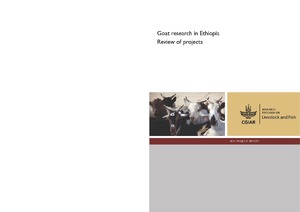Location
The International Center for Agricultural Research in the Dry Areas (ICARDA) was established in 1977. It is one of 15 such centers supported by the CGIAR. ICARDA’s founding mandate to promote agricultural development in the dry areas of developing countries remains highly relevant today.
ICARDA works with a tight focus on the problem-solving needs of resource-poor farmers, achieving this through the in-field delivery of its research outputs. Although global food production has increased by 20 per cent in the past decade, food insecurity and poverty remain widespread, while the natural resource base continues to decline.
International research centers such as ICARDA, which have helped drive previous improvements, continue to deliver new technologies to support sustainable growth in agriculture, and crucially, to work with a wide range of partners to accelerate the dissemination of these technologies.
ICARDA’s biggest strength is its staff – 600 highly skilled men and women from 32 countries. Our research and training activities cover crop improvement, water and land management, integrated crop-livestock-rangeland management, and climate change adaptation.
Other interventions include:
- Water harvesting - supplemental irrigation and water-saving irrigation techniques
- Conservation agriculture methods to reduce production costs and improve sustainability
- Diversification of production systems to high-value crops – horticulture, herbal and medicinal plants
- Integrated crop/rangeland/livestock production systems including non-traditional sources of livestock feed
- Empowerment of rural women – support and training for value-added products.
The ICARDA genebank holds over 135,000 accessions from over 110 countries: traditional varieties, improved germplasm, and a unique set of wild crop relatives. These include wheat, barley, oats and other cereals; food legumes such as faba bean, chickpea, lentil and field pea; forage crops, rangeland plants, and wild relatives of each of these species.
ICARDA’s research portfolio is part of a long-term strategic plan covering 2007 to 2016, focused on improving productivity, incomes and livelihoods among resource-poor households.
The strategy combines continuity with change – addressing current problems while expanding the focus to emerging challenges such as climate change and desertification.
We work closely with national agricultural research systems and government ministries. Over the years the Center has built a network of strong partnerships with national, regional and international institutions, universities, non-governmental organizations and ministries in the developing world and in industrialized countries with advanced research institutes.
THE ‘DRY AREAS’
Research and training activities cover the non-tropical dry areas globally, using West Asia, North Africa, Central Asia and the Caucasus as research platforms to develop, test, and scale-out new innovations and policy options.
Dry areas cover 41 per cent of the world’s land area and are home to one-third of the global population. About 16 per cent of this population lives in chronic poverty, particularly in marginal rainfed areas. The dry areas are challenged by rapid population growth, frequent droughts, high climatic variability, land degradation and desertification, and widespread poverty. The complex of relationships between these challenges has created a "Poverty Trap."
Members:
Resources
Displaying 296 - 300 of 431Assessment of Contour Bunding Technology for Improved Land and Water Management in Mali
This research was carried out in three agro-climatic regions of Mali (Mopti, Koulikoro and Sikasso) to assess
contour bunding technology (CBT) for improved land and water management. Reference was made to
existing literature and field surveys were conducted following georeferencing and quantification of existing
land and water management technologies. Farmers’ perceptions towards the use of the most commonly
applied technologies were assessed. Results indicate that CBT is widely adopted in farmers’ fields to
Soil information system: use and potentials in humid and semi-arid tropics
The articles presented in this special section emanated from the researches of consortium members of the National Agricultural
Innovative Project (NAIP, Component 4) of the Indian Council of Agricultural Research (ICAR), New Delhi. These researches have
helped develop a soil information system (SIS). In view of the changing scenario all over the world, the need of the hour is to get
assistance from a host of researchers specialized in soils, crops, geology, geography and information technology to make proper use of
The PREDICTS database: a global database of how local terrestrial biodiversity responds to human impacts
Biodiversity continues to decline in the face of increasing anthropogenic pressures such as habitat destruction, exploitation, pollution and introduction of alien species. Existing global databases of species’ threat status or population time series are dominated by charismatic species. The collation of datasets with broad taxonomic and biogeographic extents, and that support computation of a range of biodiversity indicators, is necessary to enable better understanding of historical declines and to project – and avert – future declines.
Review of goat research and development projects in Ethiopia
Drought preparedness and drought mitigation in the developing world?s drylands
Drought is one of the major constraints affecting food security and livelihoods of more than two billion people that reside on dry areas which constitute 41% of the world?s land surface. Drought is defined as deficiency of precipitation over an extended period of time resulting in water scarcity. Our best minds should be concentrated where the greatest challenges lie today – on discoveries and new solutions to cope with the challenges facing dry areas particularly drought and water scarcity.







